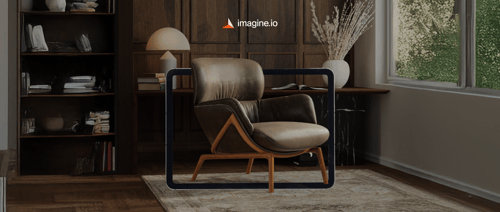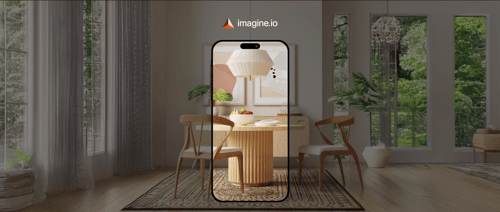A single delay in launching a new furniture line or décor collection can cede ground to competitors, leaving smaller players scrambling to keep pace. Envision a compact design studio, its walls lined with sketches of a minimalist dining table. Historically, transforming that vision into a market-ready product demanded months of prototyping, revisions, and coordination. Now, a technological revolution is reshaping this landscape. Real-time rendering, fueled by advanced 3D visualization and artificial intelligence, is compressing those timelines, enabling boutique brands to leap from concept to consumer with unprecedented speed.
This transformation transcends mere efficiency. It's about delivering immersive, tailored experiences that resonate with today's discerning customers while maintaining agility in a saturated market. The global 3D rendering market, valued at $4.47 billion in 2024, is forecast to surge to $26.65 billion by 2034, driven by a robust 19.55% compound annual growth rate, according to Precedence Research. The catalyst? A growing appetite for real-time rendering that powers innovative product simulations across sectors, including home décor. For boutique brands, this technology is not just an advantage it's a lifeline for staying competitive.
Redefining Design: The Digital-First Revolution
The era of relying on physical prototypes and protracted design cycles is fading. Boutique home brands are pivoting to digital-first strategies, propelled by real-time rendering solutions. Zion Market Research reports that this market, worth $2.97 billion in 2023, is projected to reach $14.15 billion by 2032, growing at a 16.9% annual rate. These tools empower designers to generate photorealistic 2D images and videos from 3D models in moments, eliminating the expense and delay of physical mockups.
Consider a boutique brand launching a series of Scandinavian-inspired sofas. Rather than constructing multiple prototypes to experiment with upholstery or dimensions, designers can render the sofa in countless variations cotton, suede, or wool, in any hue within seconds. AI-enhanced platforms, such as imagine.io, amplify this process by accelerating iterations and proposing design adjustments informed by market data. What once consumed weeks now unfolds in hours, enabling brands to adapt swiftly to shifting consumer tastes.
Success Stories: Boutique Brands Leading the Charge
The power of real-time rendering shines through in the achievements of boutique brands embracing it. One furniture company, focused on bespoke bookshelves, significantly reduced prototyping time using rendering technology. By visualizing intricate details shelf spacing, wood textures, and even lighting effects before production, they launched a new line ahead of schedule. This approach not only reduced costs but also allowed virtual market testing, refining designs based on early customer input.
Similarly, an interior design firm serving upscale clients has transformed its workflow. With real-time visualization, they deliver instant room mockups, letting clients toggle between curtains, furniture, or paint colors during consultations. This interactivity has replaced static presentations with engaging, real-time experiences, accelerating client decisions and boosting satisfaction. Fact.MR notes that the real-time rendering market, valued at $723.7 million in 2023, is expected to climb to $3.57 billion by 2033 at a 17.3% growth rate, fueled by demand for such immersive visuals across industries.
These cases underscore a pivotal trend: boutique brands are fulfilling consumer cravings for personalization while compressing timelines. Today's customers demand unique, made-to-order products, and real-time rendering delivers this without compromising speed. A 2024 analysis by Towards Packaging projects the 3D rendering market to grow from $5.36 billion in 2025 to $23.78 billion by 2034, with an 18% annual growth rate, highlighting its critical role in fields like product design and home décor.
Navigating Obstacles: The Road Isn't Always Smooth
Despite its potential, real-time rendering presents challenges. High-fidelity rendering requires substantial computational resources, which can tax the budgets of smaller boutique brands. Advanced graphics processing units (GPUs) and robust hardware are often prerequisites, posing barriers for firms new to 3D visualization. Scaling these tools while preserving creative integrity is another hurdle. As brands diversify their offerings, ensuring every rendered product aligns with their vision demands expertise and reliable infrastructure.
The fragmented nature of the boutique market adds complexity. These brands cater to eclectic audiences modern minimalists, eclectic artisans, or classic traditionalists each with distinct preferences. Balancing these diverse demands with rendering technology can strain resources. Integrating rendering tools with existing systems, such as legacy inventory or sales software, can also be cumbersome, necessitating investment in training and process overhauls.
The Rewards: Efficiency, Personalization, and Growth
Yet, the benefits of real-time rendering far outweigh these challenges. By minimizing reliance on physical prototypes and iterative revisions, brands cut costs and accelerate development. Business Research Insights forecasts the visualization and 3D rendering software market to expand from $1.7 billion in 2025 to $4.414 billion by 2033, driven by its capacity to provide instant insights and intuitive interfaces. For boutique brands, this translates to streamlined operations, freeing them to focus on crafting distinctive, high-quality products.
Personalization is a cornerstone of this revolution. Real-time rendering enables brands to offer extensive customization imagine a coffee table in 20 finishes or a rug in 30 patterns without delaying production. This caters to the rising demand for individuality, positioning boutique brands to outshine mass-market rivals. Collaboration also thrives. Designers, marketers, and customers can engage with 3D models in real time, refining concepts instantly. This efficient feedback loop shortens the journey from idea to market, keeping brands agile.
The strategic impact extends to market expansion. Real-time rendering allows brands to showcase products virtually before production, gauging demand and generating online excitement. This minimizes the risk of overstocking and opens global markets. For a boutique brand aiming to reach international buyers, the ability to market a new collection through vivid 3D visuals is a potent asset.
The Horizon: A Transformative Future
The trajectory of real-time rendering in the home décor sector is luminous, with industry leaders brimming with confidence. Experts in 3D visualization anticipate that advancements in AI and cloud computing will democratize these tools, empowering even the smallest studios to compete with industry titans. Picture a solo designer wielding software that renders photorealistic products in seconds, rivaling the output of major brands.
As the technology matures, its influence on boutique home brands will deepen. The insatiable demand for realistic, interactive visuals spanning gaming, architecture, and furniture design positions real-time rendering as a linchpin of innovation. For boutique brands, the imperative is unmistakable: adopt these tools or risk obsolescence. In a market defined by speed and ingenuity, real-time rendering is no longer optional it's essential.
The next time you explore a boutique brand's website and admire a flawlessly rendered lamp, pause to consider the technology behind it. It's a force that's empowering small brands to dream boldly, act swiftly, and bring their creations to life, pixel by pixel, in a world that waits for no one.
Disclaimer: The above helpful resources content contains personal opinions and experiences. The information provided is for general knowledge and does not constitute professional advice.
You may also be interested in: 3D Outdoor Product Visualization – imagine.io
Struggling with expensive, outdated product visuals that slow down your creative process and stunt eCommerce growth? imagine.io's AI-powered platform empowers furniture, home décor, and textile brands to effortlessly produce striking 3D images, immersive videos, AR experiences, and interactive configurators. Cut production costs up to 70%, boost conversions 5X, speed up prototyping, and supercharge your online sales. Ready to elevate your product visuals and captivate customers? Book a demo with imagine.io today!
Powered by flareAI.co




.png?width=500&name=How%20to%20Add%20a%203D%20Product%20Configurator%20to%20Your%20WordPress%20Website%20(Complete%20B2B%20Guide).png)
















%20(1).png?width=500&name=Why%20Exploded%20Mattress%20Views%20Matter%20(And%20How%20to%20Generate%20Them)%20(1).png)
.png?width=500&name=Best%20Shopify%20Product%20Configurator_%20How%20to%20Choose%20the%20Right%20One%20(2).png)
.png?width=500&name=Why%20Exploded%20Mattress%20Views%20Matter%20(And%20How%20to%20Generate%20Them).png)



.png?width=500&name=Best%20Shopify%20Product%20Configurator_%20How%20to%20Choose%20the%20Right%20One%20(1).png)







.png?width=500&name=How%203D%20Rendering%20Can%20Make%20or%20Break%20Your%20Industrial%20Design%20Pitch%20(1).png)








%20with%20Digital%20Twins%20and%203D%20Visualization.png?width=500&name=Optimizing%20Your%20Digital%20Asset%20Management%20(DAM)%20with%20Digital%20Twins%20and%203D%20Visualization.png)




.png?width=500&name=Styling%20Home%20Decor%20for%202025_%20From%20Global%20Influences%20to%20Playful%20Personalization%20(1).png)
